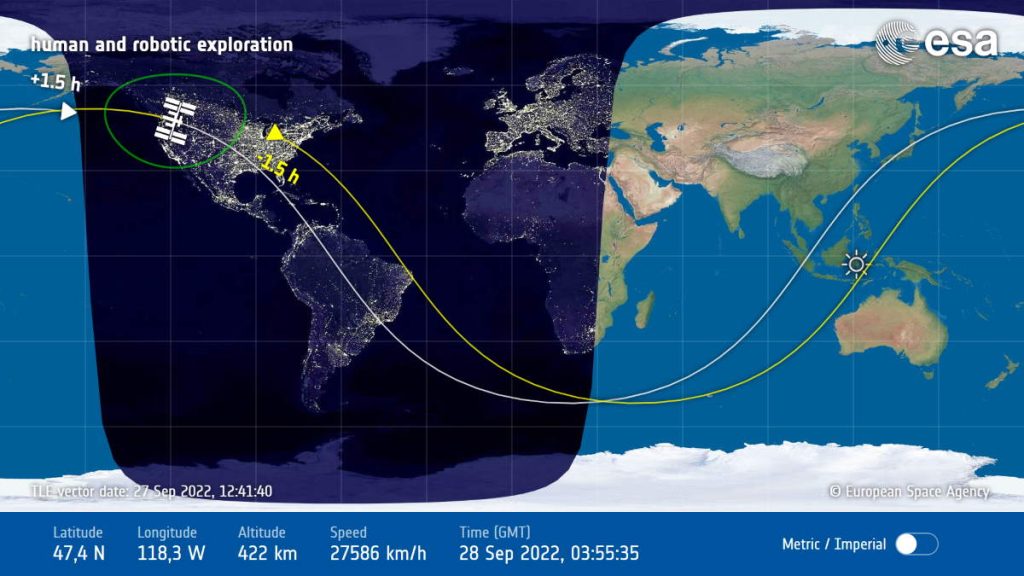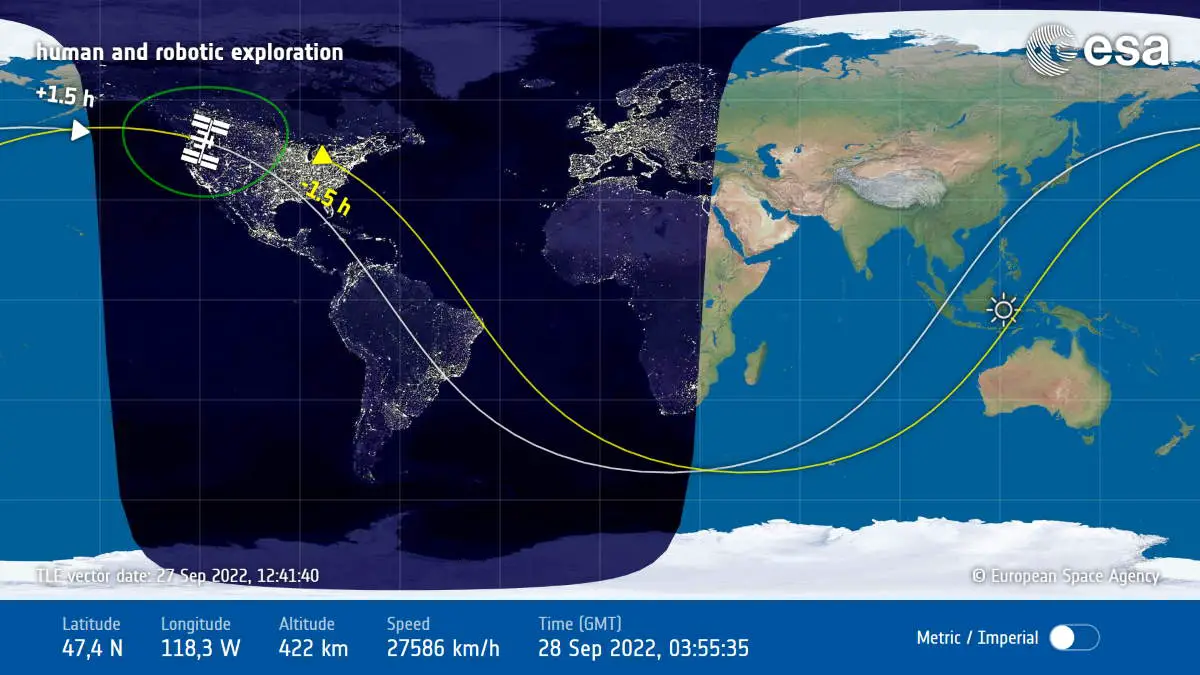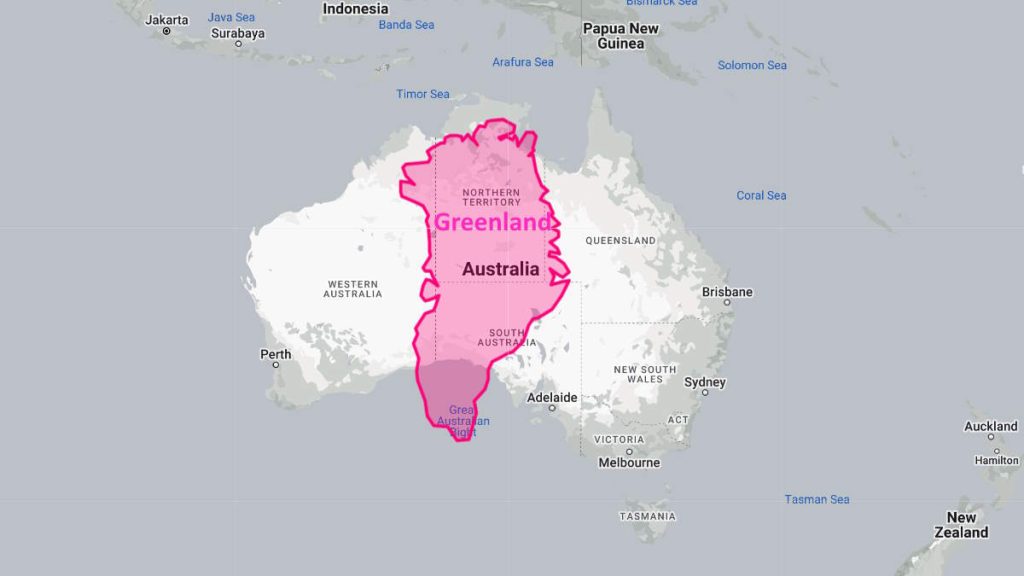Where’s the International Space Station right now? Here’s the live International Space Station tracking map, powered by the European Space Agency (ESA).
Please wait for a few seconds while the International Space Station live tracking map is loading. You can see also the next orbit’s path of the ISS on the map.
The path of the next orbit is also different from the current orbit’s path because of the rotation of Earth.
Map source: International Space Station Tracker on the European Space Agency website
International Space Station Tracking: Why does the ISS path appear like a wave on the map of the world?

The International Space Station‘s path (or any other satellites/spacecraft orbiting Earth) appears like a wave on the map of the world. Why is it like that?
In fact, the ISS and other spacecraft orbiting Earth follow almost a circular orbit. But it appears like a wave on the map of the world because the maps are two-dimensional. Furthermore, most world maps use Mercator projection which was presented by the Flemish geographer and cartographer Gerardus Mercator in 1569.
If you represent the circular orbit of the ISS on a two-dimensional map, then the equator would appear like a sinusoidal wave. The Mercator projection that has often been used in world maps also distorts it further.
In the short animation below, you can clearly see why the path of the International Space Station (or any other satellites/spacecraft orbiting Earth) appears like a wave on the map of the world.
How to spot the International Space Station in the sky?
You can watch the International Space Station pass overhead from several thousand locations worldwide. It is the third brightest object in the sky (dimmer only than the Sun and Moon) and easy to spot if you know when to look up.
Visible to the naked eye, it looks like a fast-moving plane only much higher and traveling thousands of miles an hour faster! It moves at 7.66 kilometers per second, or roughly 27,580 km/h or 17,137 mph!
The space station is visible because it reflects the light of the Sun – the same reason we can see the Moon or any other planet in the solar system. However, unlike the Moon, the space station isn’t bright enough to see during the day. It can only be seen when it is dawn or dusk at your location.
The ISS looks like an airplane or a very bright star moving across the sky, except it doesn’t have flashing lights or change direction. It will also be moving considerably faster than a typical airplane (airplanes generally fly at about 600 mph or 965 km/h).
NASA even created an alert for you to spot the ISS. You can just drop your email or phone number, and NASA will alert you before the International Space Station goes overhead. You can set the alert on the Spot the Station website.
How often does one expect to see the space station?
It depends on where you are located in the world. It can range from one sighting opportunity a month to several a week. Also, keep in mind that it has to be dark (night) without clouds where you are, and the International Space Station has to happen to be going overhead.
Video: International Space Station, ISS, as seen from Earth
In the video below, the International Space Station passes over the Bay of Biscay and Southern France, as viewed from the amateur astronomer’s roof in Cheshire in the northwest of England (19th June 2012).
At its closest point, the ISS was 800 km (500 miles) away but moved away to about 1400 km (875 miles) when it passed into the low cloud to the East.
Please note that this video is sped up 3 times.
Sources
- Why Do Satellites’ Orbits Look Like A Sinusoidal Wave On The World Map? on the Science ABC website
- “Spot the International Space Station” on the NASA Spot the Station website
- Moon Landings: All-Time List [1966-2025] - February 2, 2025
- What Is Max-Q and Why Is It Important During Rocket Launches? - January 16, 2025
- Top 10 Tallest Rockets Ever Launched [2025 Update] - January 16, 2025

